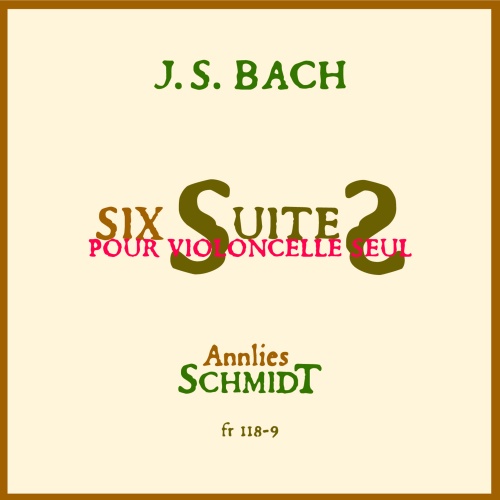
Ann(e)lies Schmidt. Bach Cello Suites. Forgotten Records fr 118-9 Released on CD 2009 Recorded 1957-58.First released on record 1960
The Cellist.
Firstly, to discover more of this cellist check out this link:
https://jsbachcellosuites.com/annlies-schmidt.html
Alexandra Dumas, is herself a cellist who has recorded the Bach Cello Suites. She has included research in to this German performer amongst other study. There is surprisingly little available on the internet. She does not even merit a Wikipedia page!
A claim to be the first.
She stands out as being the first female performer to record and release a complete Cello Suites recording and indeed not only that but to be the first cellist to record the sixth Suite on a five string cello, in what is a historically informed performance!
A counter claim!
For completeness, it should be pointed out that in Fergus Fleming’s biography of his step sister Amaryllis Fleming, there is the claim that she is the first to play the sixth Suite on an Amati cello adapted to carry five strings. This would appear to have taken place in the early sixties and therefore post dates Annlies’ recording. Unfortunately, there is no published recording of Ms Fleming performing the Suites although she apparently recorded them for the BBC. I would feel truly enlightened to hear those recordings!
The Music.
So, with the above in mind, I was curious to listen to Frau Schmidt, to hear and to perhaps even scoff (inwardly) at what I imagined would be a very inferior recording. I was expecting inaccuracies and bizarre interpretation. However, I was in for quite a surprise. Firstly, the quality of the recording taken from original records on this CD is surprisingly good with a decent mellow lower register and a top register without too much scratchiness. Secondly, other than a couple of very obvious edits in the first Suite and during a couple of the Sarabandes the playing is very accurate with sound intonation and very confident articulation.
Speed!
That then leaves the interpretation. This was the biggest shock, and I feel is somewhat revelatory. Essentially, the Preludes, Courantes and Gigues are played at a phenomenal pace! This is not that unusual. Various more modern performers are noted to reach what some might describe as illegal speeds, and not always with precision. However, Annlies’ I feel sure is the fastest I have yet to hear. (I refuse to evidence this as I do not wish to descend into the depths of documenting the duration of every performers recording!)
Articulation.
In addition, she performs with great clarity and clear articulation even in a recording older than myself (62years). I am interested to note that Annlies teacher was Emmanuel Feuermann a legend in himself. He is known for his great technique and no slouch himself. Compare his recording of David Popper’s “The Spinning song” He wipes the floor with Starker’s version! One assumes he shared wisdom and technique with his pupil about playing very fast. My one obvious tip here is to use the least bow travel you can manage!
Chord progression.
The main advantage of this approach it appears to me is that it brings out the sense of direction of the amazing chord progressions particularly in the Preludes. Just one example, is the second Suite. This is often played quite slowly to reflect the minor key, but here it is performed at a tremendous pace which transforms it into a very different piece of music. There is a real sense of where it it going. Thereby, emphasising the sense of polyphony from the (largely) single line of notes. However, this pace is not everyone’s cup of tea. My fellow reviewer Mark could not listen after the first Prelude!
Some reservations.
The pace does not always work in my mind particularly with the fourth Prelude. But in general I think this characteristic alone gives valid reason for anyone with an interest in the Suites to explore further.
The sixth Suite with five string cello continues the general theme of pace in faster movements, but always with a sense of rhythm suited to the dance origin of the movements. I do feel that the tone of the instrument is a little thinner than in the other Suites. Throughout this Suite and the others there is a sense of enthusiasm and vigour. No doubt much of the recording was done in one or two takes and in essence is a live recording.
In Conclusion.
Other aspects of interpretation deserve comment as well but I leave that to others. For me this recording is more than a curiosity; it is one I suspect I will return to for the listening pleasure.
Charles.